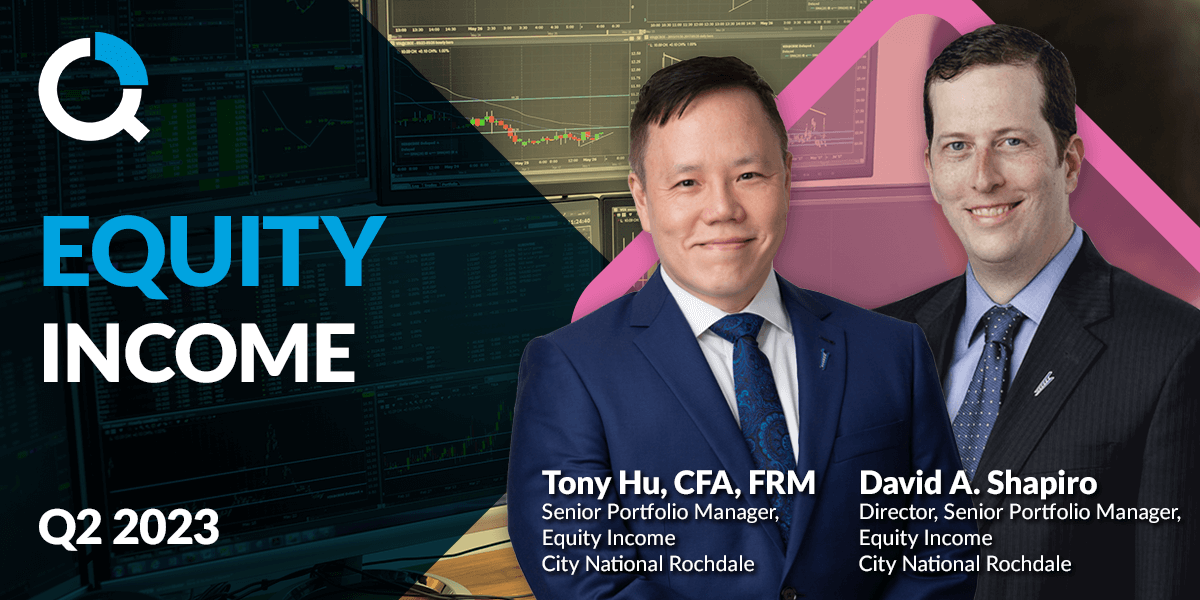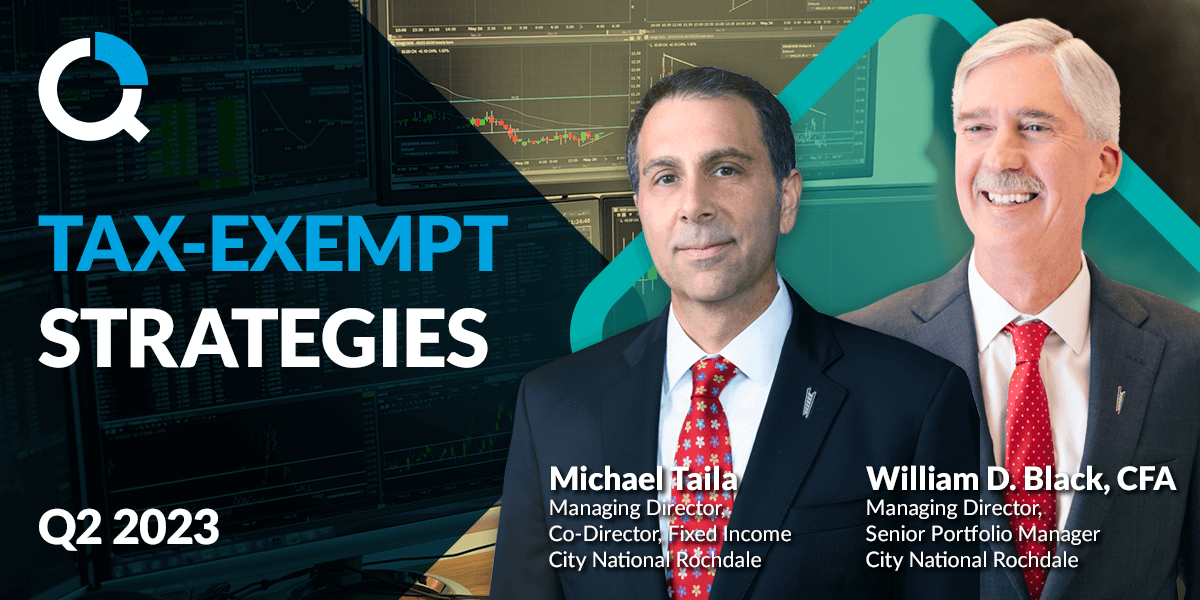
Benefits of Owning High Yield Bonds Are Compelling
Key Points
- Federal reserve policy is key for the bond market
- Yield curve inversion indicates positive long-term bond returns
- High yield bonds provide adequate compensation for risk
The end of 2022 marked a handoff from inflationary to growth concerns, creating volatility in fixed income markets. US Treasuries continued their historic upward pace, peaking for the year in October at an intraday high of 4.33%.1
Federal Reserve policy remains key, and higher rates are likely to create problems for the economy. The market for global high yield bonds staged a rally as clarity around a potential stopping point for the Federal Funds target rate firmed, although the rate will continue to climb. Investment Grade bonds showed signs of life toward the end of the year, orchestrating a turnaround fueled by a short-lived peak and subsequent decline in yields, which fell 0.42%1 and ended the year at 3.90%.1 Fixed income markets generally rose in Q4, with the broad aggregate investment grade index finishing up 1.87%2 and US High Yield bonds surging 4.17%.3
The Higher-for-Longer environment is still here, which benefits cash investments. As a proxy for liquidity management, 6-month US Treasury Bills yield 4.81%.4 Bonds with longer maturities also have higher yields, and the potential for a mild recession will make interest rate exposure increasingly attractive during 2023. The historic yield curve inversion, a phenomenon characterized by lower long-term rates relative to short-term rates, is a forward signal that long-term bonds will rise. The difference between 2-year and 10-year US Treasury notes was as low as -0.84% in December, a level last reached in October 1981.
While the risk of a recession has increased, the benefits of owning high yield bonds are compelling. We expect high yield to face pressure during 2023, but with income levels above 8%,3the market is providing adequate compensation for the potential risks. The historically low level of defaults is unsustainable, and it is likely to rise to long-term averages of 4%–5%,5 but this is unlikely to result in persistent negative returns.
Projections for a mild recession indicate that returns across taxable fixed income markets are likely to rebound from a challenging 2022. Current yield levels will help alleviate the strain on fixed income even if rates continue to rise, and further clarity on inflation and growth is likely to relieve pressure on the market.
Important Disclosures
Important Information
Any opinions, projections, forecasts and forward-looking statements presented herein are valid as of the date of this document and are subject to change.
The information presented does not involve the rendering of personalized investment, financial, legal or tax advice. This presentation is not an offer to buy or sell, or a solicitation of any offer to buy or sell any of the securities mentioned herein.
Certain statements contained herein may constitute projections, forecasts and other forward-looking statements, which do not reflect actual results and are based primarily upon a hypothetical set of assumptions applied to certain historical financial information. Certain information has been provided by third-party sources and, although believed to be reliable, it has not been independently verified and its accuracy or completeness cannot be guaranteed.
Concentrating assets in a particular industry, sector of the economy, or markets may increase volatility because the investment will be more susceptible to the impact of market, economic, regulatory, and other factors affecting that industry or sector compared with a more broadly diversified asset allocation.
Private investments often engage in leveraging and other speculative investment practices that may increase the risk of investment loss, can be highly illiquid, are not required to provide periodic pricing or valuation information to investors, and may involve complex tax structures and delays in distributing important tax information.
Alternative investments are speculative, entail substantial risks, offer limited or no liquidity, and are not suitable for all investors. These investments have limited transparency to the funds’ investments and may involve leverage which magnifies both losses and gains, including the risk of loss of the entire investment. Alternative investments have varying and lengthy lockup provisions. Please see the Offering Memorandum for more complete information regarding the Fund’s investment objectives, risks, fees and other expenses.
Investments in below-investment-grade debt securities, which are usually called “high-yield” or “junk bonds,” are typically in weaker financial health and such securities can be harder to value and sell, and their prices can be more volatile than more highly rated securities. While these securities generally have higher rates of interest, they also involve greater risk of default than do securities of a higher-quality rating.
There are inherent risks with equity investing. These risks include, but are not limited to, stock market, manager or investment style. Stock markets tend to move in cycles, with periods of rising prices and periods of falling prices. Investing in international markets carries risks such as currency fluctuation, regulatory risks, and economic and political instability. Emerging markets involve heightened risks related to the same factors, as well as increased volatility, lower trading volume and less liquidity. Emerging markets can have greater custodial and operational risks and less developed legal and accounting systems than developed markets.
There are inherent risks with fixed-income investing. These risks may include interest rate, call, credit, market, inflation, government policy, liquidity or junk bond. When interest rates rise, bond prices fall. This risk is heightened with investments in longer-duration fixed-income securities and during periods when prevailing interest rates are low or negative. The yields and market values of municipal securities may be more affected by changes in tax rates and policies than similar income-bearing taxable securities. Certain investors’ incomes may be subject to the Federal Alternative Minimum Tax (AMT), and taxable gains are also possible. Investments in below-investment-grade debt securities, which are usually called “high yield” or “junk bonds,” are typically in weaker financial health and such securities can be harder to value and sell, and their prices can be more volatile than more highly rated securities. While these securities generally have higher rates of interest, they also involve greater risk of default than do securities of a higher-quality rating.
All investing is subject to risk, including the possible loss of the money you invest. As with any investment strategy, there is no guarantee that investment objectives will be met, and investors may lose money. Diversification does not ensure a profit or protect against a loss in a declining market. Past performance is no guarantee of future performance.
Indices are unmanaged, and one cannot invest directly in an index. Index returns do not reflect a deduction for fees or expenses.
Alternative investments are speculative, entail substantial risks, offer limited or no liquidity and are not suitable for all investors. These investments have limited transparency to the funds’ investments and may involve leverage which magnifies both losses and gains, including the risk of loss of the entire investment. Alternative investments have varying and lengthy lockup provisions.
This material is available to advisory and sub-advised clients, as well as financial professionals working with City National Rochdale, a registered investment advisor and a wholly-owned subsidiary of City National Bank. City National Bank provides investment management services through its sub-advisory relationship with City National Rochdale.
Index Defintions
S&P 500 Index: The S&P 500 Index, or Standard & Poor’s 500 Index, is a market-capitalization-weighted index of 500 leading publicly traded companies in the U.S. It is not an exact list of the top 500 U.S. companies by market cap because there are other criteria that the index includes.
Bloomberg Barclays US Aggregate Bond Index (LBUSTRUU): The Bloomberg Aggregate Bond Index or “the Agg” is a broad-based fixed-income index used by bond traders and the managers of mutual funds and exchange-traded funds (ETFs) as a benchmark to measure their relative performance.
GT2 Govt, GT3 Govt, GT5 Govt, GT10 Govt, GT30 Govt: US Government Treasury Yields
DXY Index: The U.S. dollar index (USDX) is a measure of the value of the U.S. dollar relative to the value of a basket of curren-cies of the majority of the U.S.’s most significant trading partners.
Dow Jones U.S. Select Dividend Index (DJDVP): The Dow Jones U.S. Select Dividend Index looks to target 100 dividend-paying stocks screened for factors that include the dividend growth rate, the dividend payout ratio and the trading volume. The components are then weighted by the dividend yield.
P/E Ratio: The price-to-earnings ratio (P/E ratio) is the ratio for valuing a company that measures its current share price relative to its earnings per share (EPS).
The Commodity Research Bureau (CRB) Index acts as a representative indicator of today’s global commodity markets. It measures the aggregated price direction of various commodity sectors.
The MSCI indexes are market cap-weighted indexes, which means stocks are weighted according to their market capitalization — calculated as stock price multiplied by the total number of shares outstanding.
Quality Ranking: City National Rochdale Proprietary Quality Ran king is the weighted a verage sum of securities held in
the strategy versus the S&P 500 at the sector le vel using the below formula.
City National Rochdale Proprietary Quality Ranking formula: 40% Dupont Quality (return on equity adjusted b y debt levels), 15% Earnings Stability (v olatility of earnings), 15% Re venue Stability (volatility of revenue), 15% Cash Earnings Quality (cash flow vs. net income of compan y) 15% Balance Sheet Quality (fundamental strength of balance s heet).
*Source: City National Rochdale proprietary r anking system utilizing MSCI and FactSet data. **Rank is a perc entile
ranking approach whereby 100 is the highest possible score and 1 is the lowest. The Ci ty National Rochdale Core compares the weighted average holdings of the str ategy to the companies in the S&P 500 on a sector basis. As of September 30, 2022. City National Rochdale proprietary ranking system utilizing MSCI and FactSet data.
Rank is a percentile ranking approach whereby 100 is the highest possible score and 1 is the lowest. The City National Rochdale Core compares the weighted average holdings of the strategy to the companies in the S&P 500 on a sector basis. As of June 2022.
Bloomberg Barclays US Aggregate Bond Index: The Bloomberg Aggregate Bond Index or “the Agg” is a broad-based fixed-income index used by bond traders and the managers of mutual funds and exchange-traded funds (ETFs) as a benchmark to measure their relative performance.
The Case-Shiller Index, formally known as the S&P CoreLogic Case-Shiller U.S. National Home Price NSA Index, is an economic indicator that measures the change in value of U.S. single-family homes on a monthly basis.
Non-deposit investment Products are: • not FDIC insured • not Bank guaranteed • may lose value
Stay Informed.
Get our Insights delivered straight to your inbox.
More from the Quarterly Update
Put our insights to work for you.
If you have a client with more than $1 million in investable assets and want to find out about the benefits of our intelligently personalized portfolio management, speak with an investment consultant near you today.
If you’re a high-net-worth client who's interested in adding an experienced investment manager to your financial team, learn more about working with us here.





